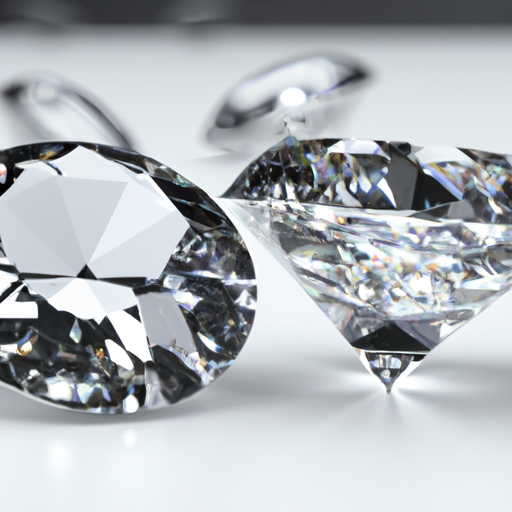
- December 27, 2022
- 5 mins READ
- Educational
When it comes to choosing an engagement ring or a special piece of jewellery, countless people are faced with a difficult decision: moissanite or diamond. While both materials are considered to be highly valuable and have desirable characteristics, there is a great deal to consider when deciding between the two. Moissanite is a lab-created gemstone, while diamonds are mined from the earth’s surface. Both have distinct advantages and disadvantages that should be considered before making a final decision.
In this article, we will compare moissanite and diamond in regard to their physical and optical properties, durability, and cost. Additionally, we will discuss popular misconceptions about each stone and provide insight into the pros and cons associated with each. By the end, you will have the information you need to make an informed decision about which gem is the best choice for your needs.
Differences in cost
One of the most significant differences between moissanite and diamond is cost. Generally, diamonds require a deeper pocket to purchase than moissanites. Moissanite is typically one-tenth the cost of diamonds, making it an affordable alternative to diamonds. Although more expensive than moissanite, diamonds are still a worthwhile investment due to their unique properties, including their durability and rarity. Moissanite is also an excellent choice if you prefer the look of a diamond without the hefty price tag.
Comparable brilliance and sparkle
When it comes to brilliance and sparkle, moissanite and diamonds are pretty much equal. This is because both stones feature a standard cut and polish of 58 facets and are graded on the same scale of excellence. Moissanite has a refractive index of 2.65-2.69 and a dispersion of 0.104, which is slightly more than diamonds at 2.42 and 0.044, respectively. This means that moissanite can create more sparkle and rainbow effects, making it visually comparable to diamonds.
Distinctive hardness on the Mohs scale
One of the main differences between moissanite and diamond is their distinctive hardness on the Mohs scale. Diamonds are the hardest mineral, with a rating of 10 on the Mohs scale, while moissanite has a hardness of 9.25-9.5. Diamonds have been assessed to be the toughest material, making them resistant to scratches, while moissanite is slightly more susceptible to scratches and damage. When it comes to durability, diamonds are the clear winner, making it the ideal choice for items that may be subject to daily wear and tear.
In conclusion, both moissanite and diamonds are beautiful stones that can be used for engagement rings or other jewellery. When deciding between the two, it is important to consider the quality of the stone, the price range, and the level of sparkle you desire. Moissanite offers a comparable look and feel to a diamond but with a much lower price tag. Ultimately, the choice between moissanite and diamond is a personal one.
Moissanite and diamond have distinct physical differences that distinguish them from one another. Unlike moissanite, which is a synthetic substance created in a lab, diamond is a naturally occurring mineral. Diamond is the hardest mineral known and scores a perfect 10 on the Mohs scale. Moissanite comes in closely behind, earning a score of 9.25 on the same scale. When it comes to sparkle, moissanite boasts a higher refractive index and dispersion compared to diamond, giving it a greater degree of brilliance and fire. It’s worth noting that diamonds are denser than moissanite, making them heavier for their size.
It can be difficult to tell the difference between moissanite and diamond with the naked eye, especially for those who are not trained gemologists. Moissanite has a slightly different appearance than diamond, with more rainbow flashes of colour and a different type of brilliance. However, without specialised equipment or training, it may be challenging to distinguish between the two. If you are unsure about the authenticity of a particular gemstone, it is always best to have it inspected by a professional jeweller or gemologist.
Diamond is more durable and resistant to scratches compared to moissanite. Diamond has a rating of 10 on the Mohs scale of hardness, while moissanite has a rating of 9.25. This means that diamonds are less likely to scratch or chip compared to moissanite.
Moissanite is generally considered a more ethical and environmentally friendly alternative to diamonds. While natural moissanite is rare, it can be created in a lab using sustainable methods. Additionally, moissanite mining does not involve the same environmental and human rights concerns as diamond mining.